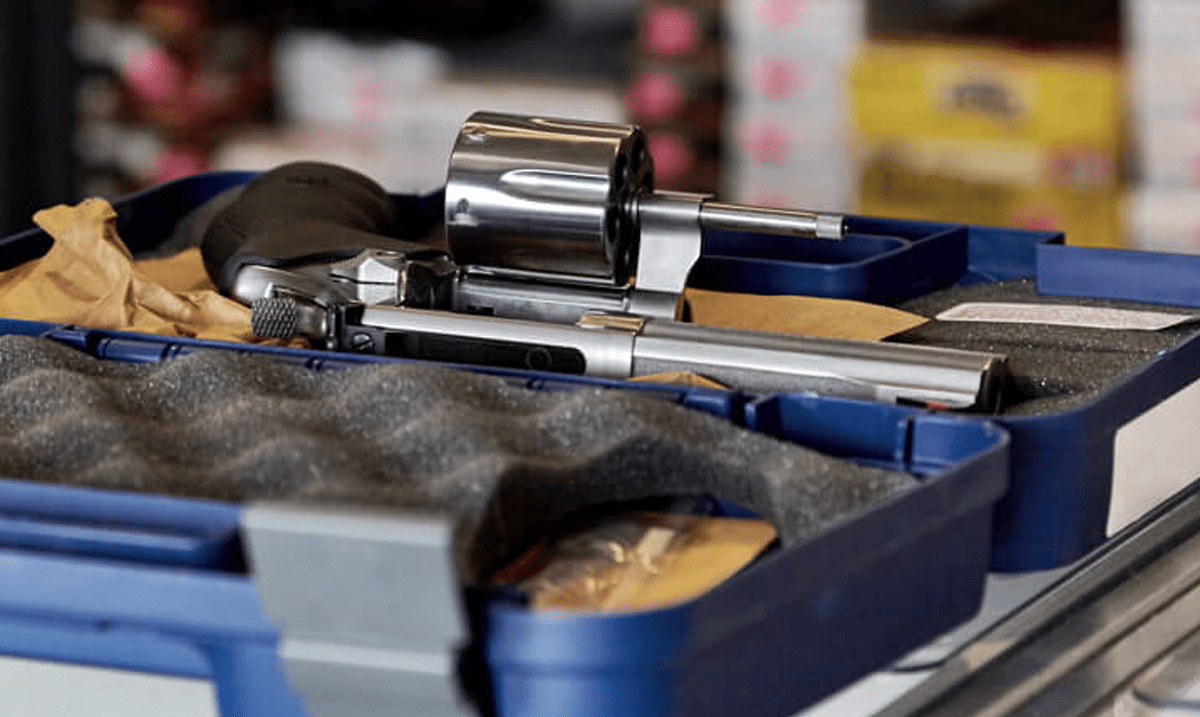 Back to News
Back to News
February 10, 2017
Why Your Range Should be Using HEPA Filters
As the owner of an indoor range, you have numerous options available to you when it comes to the choice of filters used in your ventilation and air filtration system. That system, of course, is an essential component of your range construction. You should have one installed, and it must meet certain criteria, all aimed at keeping your staff, your customers and the environment healthy. But with so many filters to choose from and at a wide range of prices, where do you start? My company, Carey’s Small Arms Range Ventilation, encourages the use of HEPA filters and the following explains why.
What is a HEPA Filter?
An essential component of most range ventilation systems is the HEPA filter. High-efficiency particulate air (HEPA) filters remove 99.97 percent of particles 0.3-micron and larger in diameter. HEPA filters are rated at minimum efficiency reporting value (MERV) 17, which in user parlance means they can trap tiny particles of smoke and lead that are missed by filters of other types having lower ratings. There are many filters with MERV ratings below 17, and these are not HEPA filters.
In addition to their high MERV rating, HEPA filters are further distinguished from lower-rated filters by their rack and mounting design. They are also furnished with gaskets on the filters and locking pressure mounts that provide a positive seal around the filter mounting to the filter frame. This ensures that all air flow is passed through the HEPA filter and that only filtered air gets to the other side. By way of comparison, almost all standard non-HEPA filters having a lower than MERV 17 rating are installed in slide-in racks. This type of mount does not form a positive seal around the filter.
Does My Range Need a HEPA Filter?
HEPA filters should be used on all systems that recirculate air back into the range. This provides a clean air flow supply with lead exposures below the OSHA (Occupational Safety and Health Administration) Action Level. This limit allows for a maximum exposure of 30 micrograms per cubic meter (without the use of a respirator) over a time-weighted eight-hour average.
In addition to the recirculation system needing a HEPA, I strongly recommend the use of these filters on the exhaust system funneling range air from the building to the outdoors. Some have argued that exhaust air need not be filtered through HEPA filters because the levels of contaminate through most commercially available filters designed for this purpose produce air with lead particulate below the EPA (Environmental Protection Agency) allowable limits. However, over time even these small amounts of lead being discharged into the environment will contaminate surroundings to a degree that exceeds the EPA limits — and then you’ve got a cleanup problem on your hands. An example:
I once witnessed a range whose system had discharged unfiltered air for over 20 years into the outdoors. This resulted in lead contamination on the roof and in the soil around the building. Furthermore, the retail area inside the building had been contaminated by outside air pulled back into the building through the heating and cooling units. The result for that range owner: An abatement remedy that cost him more $500,000.
What About the Cost of HEPA Filters?
One complaint often heard about HEPA filters is that they are costly to replace. HEPA filters do indeed generally cost more than other filter types, but how much you can expect to pay in maintenance, i.e., the life of your HEPA filter before it needs changing, depends on several things, including your bullet trap design, the volume of shooting and the overall configuration of your building. We’ll explore how these three things affect filter life in later articles, but based on my experience, the following three steps are recommended to keep your HEPA filter costs under control:
- Install a good pre-filter. These can protect the HEPA filter and extend its life. Pre-filters have lower MERV ratings, but they can remove most of the larger contaminants before they reach the HEPA filter, thereby reducing the load on the HEPA. I have recently seen setups where high-efficiency rigid bag filters work very well to extend the life of the HEPA filter.
- Consider investing in a new filter rack. Your filter supplier and your range ventilation maintenance contractor can help you find the best solution based on your current installation design and help you decide whether it’s worth the investment to change it. It’s important to look long term and compare the return-on-investment (ROI) of each proposed alternative.
- Make sure your exhaust motor is adequate. It is critical to maintain the air flow in your range at a negative pressure to ensure that contaminate created in your range does not migrate into your non-range spaces. If the exhaust motor is sized and designed properly, the exhaust modulates to maintain this negative pressure between your range and the non-range part of the building as your filters load. With an inadequate exhaust motor and fan, the range will lose its negative pressure when the HEPA filter is only slightly loaded, and you will then need to change that filter more often to maintain the negative pressure.
Have questions about your filter and ventilation setup? NSSF has a number of resources available to help, including a team of Range Action Specialists who can meet with you for an onsite consultation. For more information, visit www.nssf.org and click on the “Range” heading at the top of the page, or contact Zach Snow, NSSF Manager, Shooting Promotions, at [email protected].
You may also be interested in: Range Ventilation Upkeep — Are You Doing it Right?
About the Author
Bill Provencher has been a principal at Carey’s Small Arms Range Ventilation since early 1992. Carey’s systems provide customized air handling using top grade filters and other components to expel airborne ballistic contaminants and evacuate smoke downrange. The company has designed and built hundreds of range ventilation systems, each of which is tested and guaranteed to meet OSHA, NIOSH and EPA requirements.









